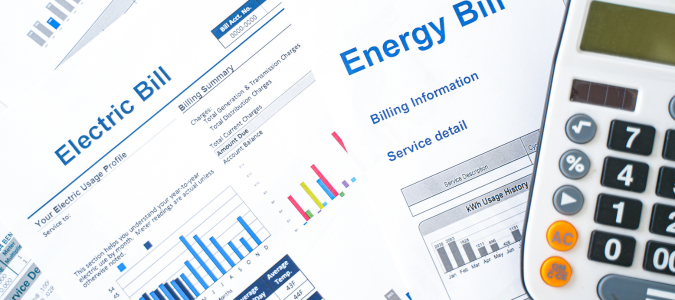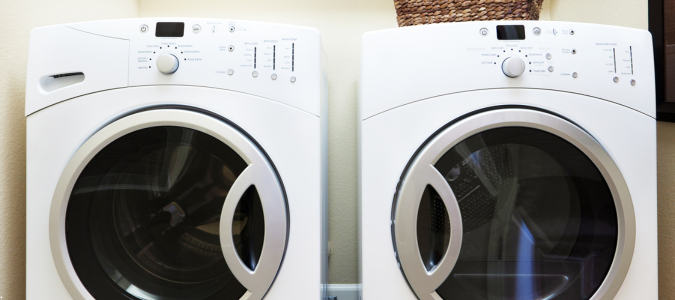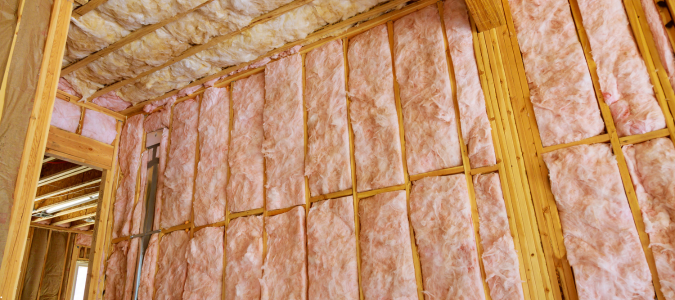Many homeowners are on the lookout for ways to reduce their monthly utility bills. Electricity costs can add up quickly, especially if your home isn’t running as efficiently as it could be. If you’ve found yourself asking, “Why is my electric bill so high?”, you’re not alone.
There are several reasons your energy usage might be higher than expected, some of which may be hidden issues around your home.
Six Common Reasons Why Your Electric Bill Is Rising
A spike in your electric bill can be alarming. However, if you understand the root cause, you can address the problem directly. You may be dealing with one of these issues:
- Using older appliances
- Increased power consumption
- Standby power use
- Poor insulation
- Inefficient light use
- HVAC issues
Let’s dive into each of these a bit more.
Using Older Appliances
While an old appliance may still get the job done, it can consume more power than normal. But if you have several old appliances, how do you know which one is costing you the most on your utility bills?
Here are key indicators:
- The appliance is 10 to 15 years old.
- The lights in your home flicker or dim when you turn on a particular appliance.
- The appliance overheats, short cycles or makes unusual humming sounds when turned on.
To know which appliance is causing the spike in your electric bill, check the wattage. You’ll find it at the back or bottom of the appliance. Then, consider how long the appliance runs each day and how often you use it. The higher these figures are, the higher your electricity bill will be.
There’s only one fix for old, inefficient appliances: replace them with energy-efficient ones. New models use less electricity or gas to perform tasks, saving you money on energy bills.
Increased Power Consumption
Each time you switch on a light bulb, turn on a heater or use another appliance, you consume energy. A few extra hours of air conditioning might not seem like a big deal, but small increases in power consumption add up quickly.
As a homeowner, here are some situations that can raise your power consumption.
Seasonal Weather Changes
During the summertime, you use air conditioners and fans more frequently. And, in the winter, you use a furnace to stay cozy at home.
New Appliances
When you buy new appliances, like a television, fridge, heater or microwave, you’re increasing your power consumption.
Large Family
As the number of people in your household increases, so does power consumption. Everyone will have to do laundry, charge their devices and turn on the lights in their rooms. All of these factors can drive up costs.
You can save a few bucks by following these tips:
- Use energy-efficient appliances.
- Turn off lights, televisions and other appliances when not in use.
- Manage heating by keeping your curtains down in warmer months.
- Layer clothing to stay warm in the winter months.
- Program your thermostat to adjust temperatures when someone is at home, when the house is empty and at night.
Standby Power Use
Think about how many times you charged your phone overnight or left your laptop charger plugged in with no laptop connected. Or maybe your microwave oven is displaying the time even when it’s not in use.
This might be convenient, but you’ll spend more on electricity. Standby power is often referred to as “vampire power.” This means your appliances quietly sip power in the background and push electric bills higher.
Here’s how to make sure your appliances don’t keep consuming power when you’re not using them:
- Unplug devices once you have finished using them.
- Invest in appliances with low standby consumption ratings.
- Use power strips and switch them off when not in use.
Poor Insulation
If your home isn’t well-insulated, it will lose more heat and cold air than it retains. It’s easy for air to escape through walls, windows, doors and even your roof. This forces your HVAC unit to work harder and longer to maintain your set temperature. Ultimately, your electric bills will increase
You can manage a poorly insulated home by:
- Sealing window and door gaps with weatherstripping.
- Moving furniture away from vents ensures that air flows freely.
- Covering bare floors with rugs for warmth during winter.
- Using thick curtains and thermal blinds to reduce heat loss through windows.
If you’re ready to take the next step toward reducing your energy use, such as upgrading to a more efficient air conditioning system, reach out to an HVAC professional.
Inefficient Light Use
Some homeowners leave the lights on when they are away from home. Others use old, inefficient bulbs that consume a lot of energy. In either case, lighting accounts for up to 15% of your total electricity bill.
To prevent or resolve inefficient lighting, here are some simple steps to take:
- Instead of lighting up an entire room, only light up the areas you’re using.
- Turn off the light in unoccupied rooms.
- Let in natural light during the day by opening windows and curtains.
HVAC Issues
Another common cause of a high electric bill is that your HVAC unit has developed a fault. When you use heating or cooling units, you might encounter issues like:
- Dirty air filters
- Faulty thermostats
- Cracked heat exchangers
- Short cycling
Look out for visible signs of a faulty HVAC system, including:
- A burning smell or some other strange odor
- Overheating
- Unusual noises
- Leaks or moisture buildup
- Error codes on the control panel
You might even notice that your AC is running but not cooling or your AC is not blowing cold air at all. All of these forces the system to work harder, which can raise your electricity bill. If you see these signs, call in an HVAC professional to diagnose the issue.
What Runs Your Electric Bill Up the Most?
An HVAC unit accounts for 43% of energy usage in an average American home. Whether you’re cranking up the AC in summer or keeping warm in winter, the HVAC system drives up your electric bills more than other appliances.
Here are other big electricity users to keep an eye on:
- Water heaters
- Washers and dryers
- Lighting
- Refrigerators
- Electric ovens
- Home entertainment equipment
- Dishwashers
- Computers
It’s no surprise that when your HVAC system isn’t working properly, like when your AC is not cooling enough, it can use up even more power. Then, utility costs add up without you realizing it.
When you know which appliances increase your energy bills the most, you can make smarter decisions about when and how to use them.
How to Lower My Electric Bill Without Replacing My Unit
If your appliances are less than 10 years old, you don’t necessarily need to replace them just yet. Try these simple ways to cut down your energy bill:
- Adjust your thermostat
- Use fans
- Seal up air leaks
- Regularly change your air filter
- Use window coverings
- Use LED light bulbs
Let’s go into more detail about each of these.
Adjust Your Thermostat
The U.S. Department of Energy recommends lowering your thermostat by 7 to 10 degrees for up to 8 hours a day. Do this at night and when the house is empty, and you can save up to 10% a year on energy bills.
Use Fans
Ceiling and standing fans circulate air around your home. These appliances help you stay cool without cranking up the AC. That way, you can spend less on your electric bills.
Seal Up Air Leaks
Check your doors, windows and vents for gaps where air can slip through. If you find any, use weatherstripping or caulk to seal them. This traps warm or cold air in your home and keeps your HVAC unit efficient.
Regularly Change the Air Filter
The air filter of an HVAC unit is built to trap dust, pet hair, dirt and other airborne particles. Over time, it becomes clogged, forcing the system to work harder. Generally, it’s best to replace your air filter every three months.
Use Window Coverings
Block out heat during the day with curtains, blinds or shades. Window coverings reduce the strain on your air conditioner, allowing the unit to operate more efficiently and keep your home cool without working harder than necessary.
Use LED Light Bulbs
LED lights use at least 75% less energy than incandescent bulbs. By switching to LEDs, you can save money over time. Plus, they generally last longer and produce less heat.
How Long Does Insulation Last?
Insulation can last anywhere from 20 to 100 years, depending on the material you use and how well you maintain it. When it comes to insulation type, you have three main options to choose from:
- Fiberglass
- Cellulose
- Spray foam
Let’s examine these a bit more.
Fiberglass
Made from glass fibers and easy to install, fiberglass typically lasts for 20 to 30 years.
Cellulose
Made from recycled paper products and can be dusty during installation. Cellulose lasts for up to 30 years.
Spray Foam
A liquid polyurethane foam that releases fumes during installation. This can last for 80 to 100 years.
Regardless of the insulation type you choose, environmental conditions can extend or shorten its lifespan. For example, if your home faces extreme heat or humidity, the insulation can wear out faster. In addition, moisture buildup, pest infestation and poor installation can reduce its effectiveness and lifespan.
Keep Your Utility Bills Down
A rising electric bill is a common household concern. In some cases, you can resolve it on your own.
However, if you’re dealing with issues like a faulty thermostat, short cycling, cracked heat exchangers or poor insulation, a licensed HVAC professional is your best resource. They have the tools and expertise to identify and resolve the problem efficiently.
ABC Can Help You Save on Energy Costs
From insulation upgrades to solar window film, there are plenty of ways to boost your home’s energy efficiency. ABC Home & Commercial Services offers free inspections and expert advice to help you find the best solutions, whether that means replacing your system or improving what you have. Our HVAC pros work with you to create a more comfortable home and lower your monthly electric bills.




